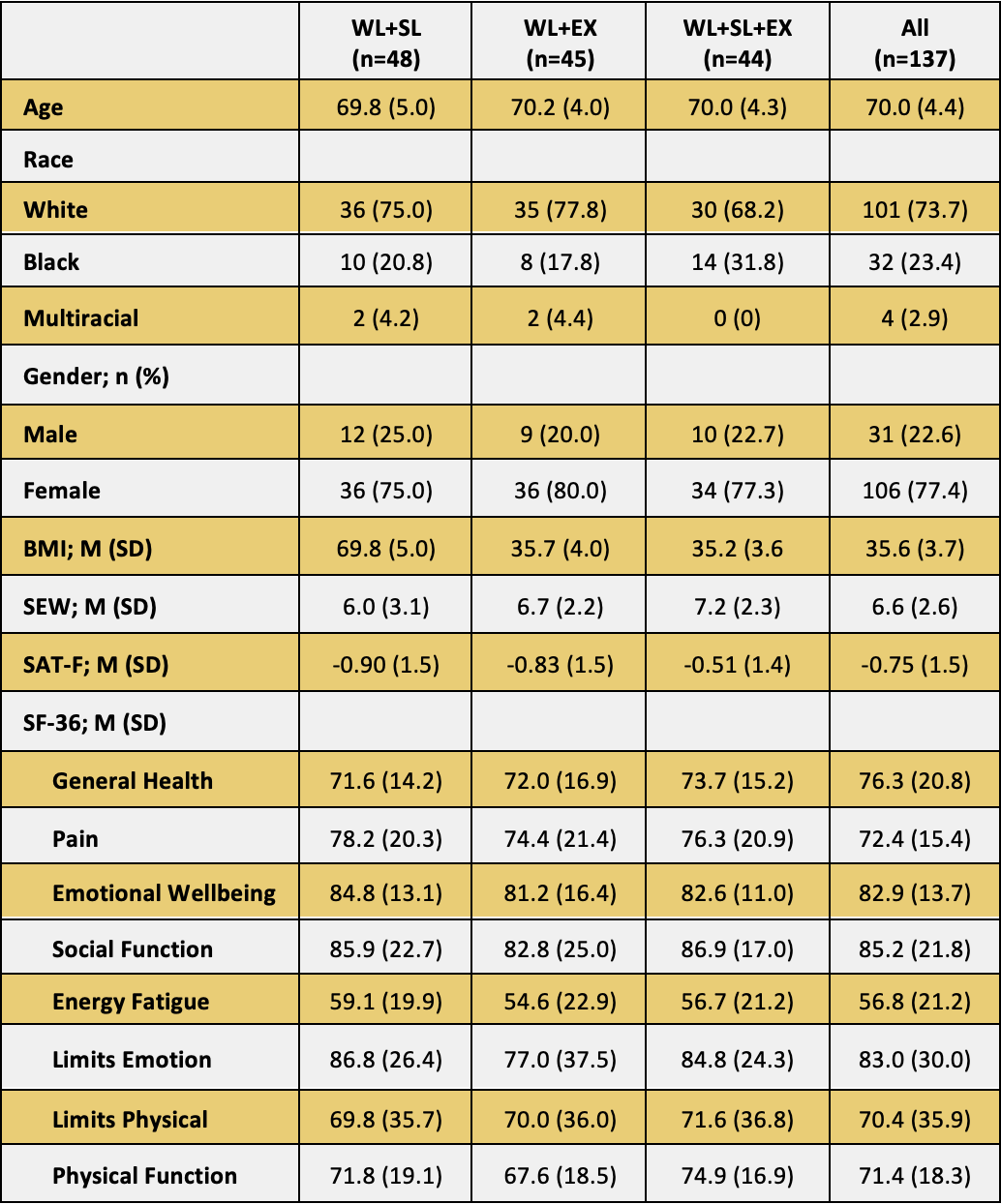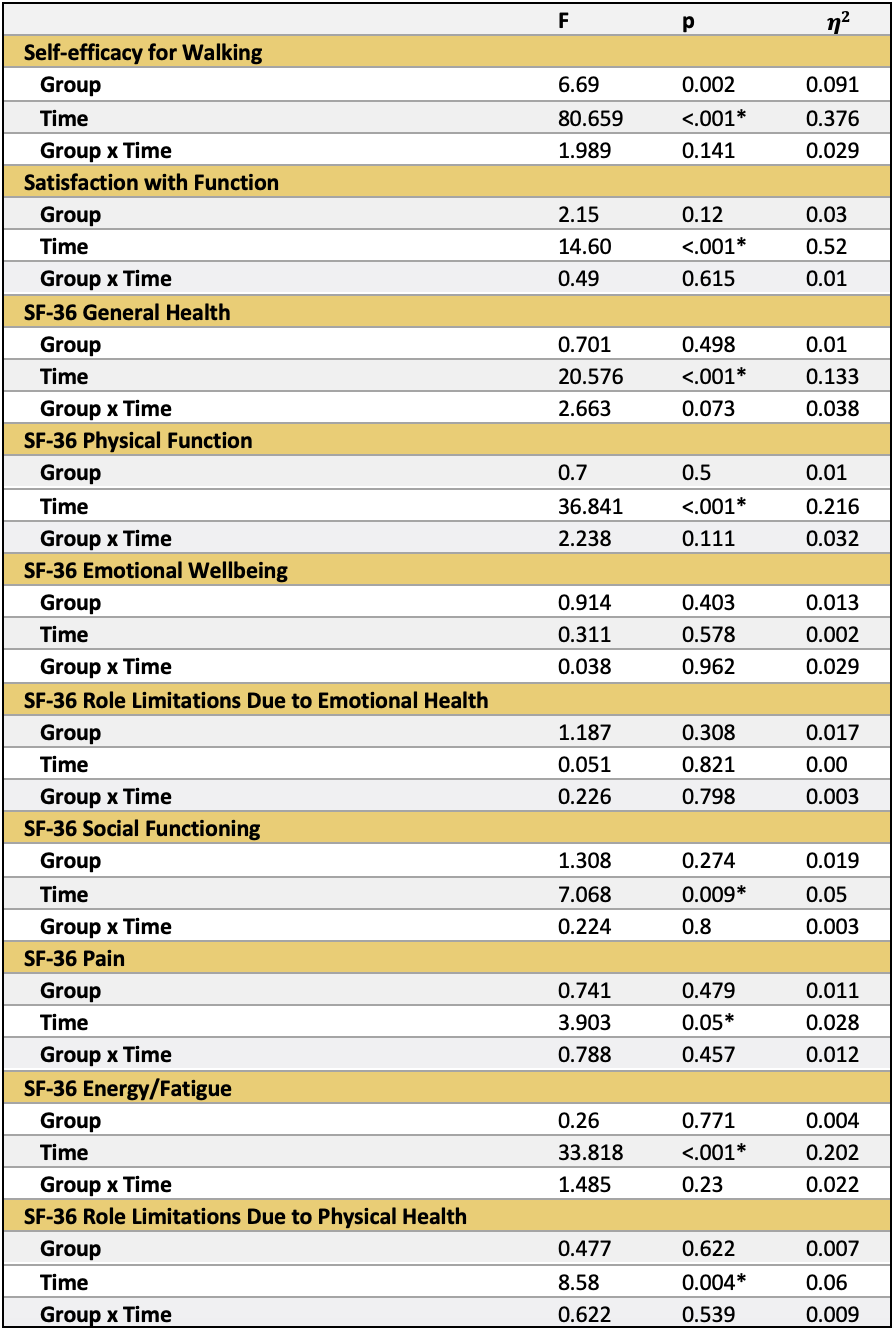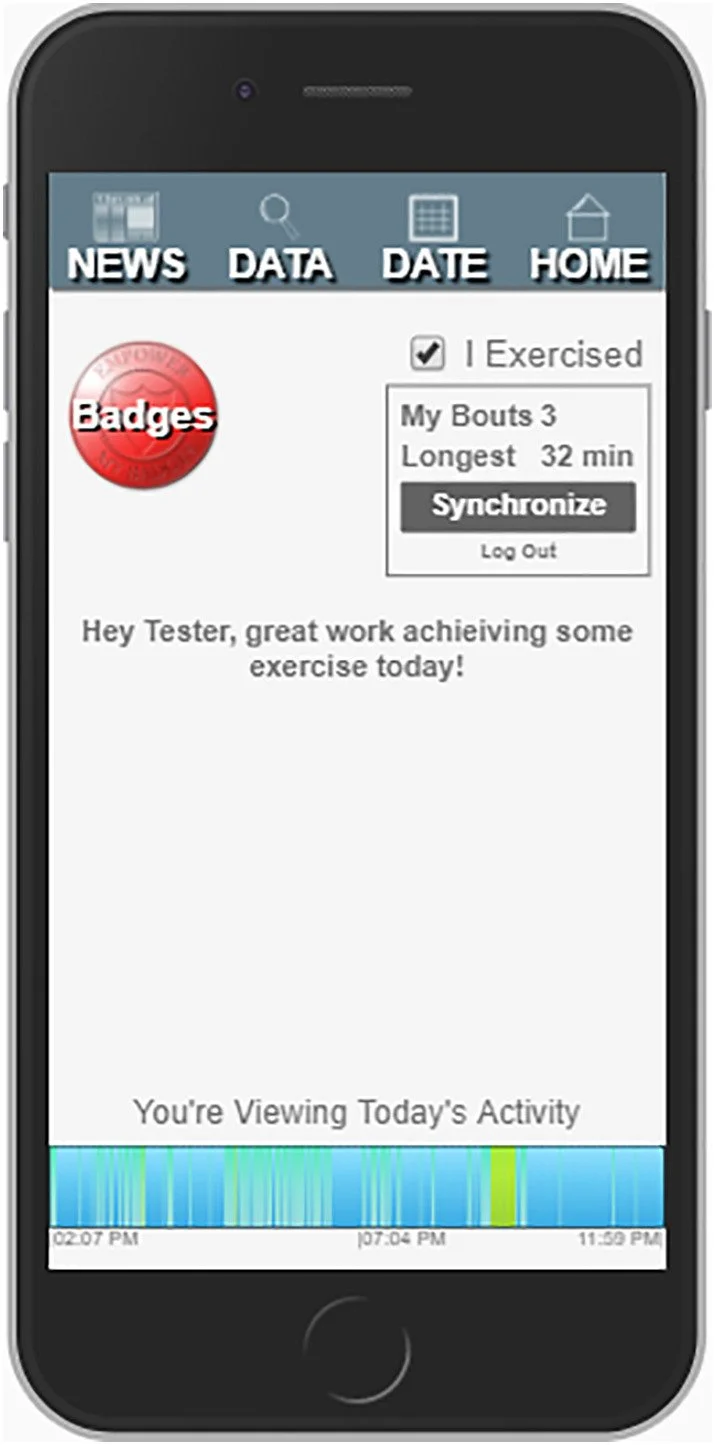Effects of Exercise and Day-Long Movement on Quality of Life in Aging
Empowered with Movement to Prevent Weight Regain (EMPOWER) Trial
Joy A. Furlipa, Justin T. Robison, Barb Nicklas PhD, W. Jack Rejeski PhD, Jason T. Fanning PhD
Wake Forest University
Why Does This Matter?
These results suggest that either structured aerobic exercise or a movement accumulation intervention will result in improvements in Social Cognitive (SC) outcomes associated with lasting behavior change and HRQOL, especially when the program enhances MVPA and sedentary breaks. Thus, finding enjoyable and sustainable physical activity that can be integrated into everyday life is important for improving sedentary time. Future research should investigate methods for tailoring the intervention to individual preferences.
Key Findings:
Mixed model ANOVAs indicated significant effects for time, with all groups improving on self-efficacy for walking (SEW), satisfaction of physical functioning (SAT-F), and the general health, physical functioning, physical role limitations, energy, social functioning, and pain sub-scales of SF-36 (all ps 0.05). There were no significant group x time interactions.
A series of regression analyses controlling for baseline values of each dependent variable, baseline sedentary time, LPA, MVPA, and group assignment suggested that change in MVPA was significantly associated with improvements in SEW (B=0.025, p=0.021), SAT-F (B=0.019, p=0.008), and the physical function (B=0.192, p=0.035) and energy (B=0.168, p=0.028) sub-scales of the SF36. Change in sedentary breaks was associated with change in the social functioning sub-scale of the SF36 (B=0.35, p=0.05).
DEMOGRAPHICS TaBLE
ReSULTS TABLE
EMPOWER Companion app screens (Exercise Condition)
The activity bar across the bottom depicts patterns of Fitbit-based non-movement (blue) and movement (green/teal). For those who received the Exercise Condition, sporadic movement in bouts <10 minutes are displayed in teal and sustained movement in bouts of at least 10 minutes are displayed in green.
EMPOWER Companion app screens (SitLESS Condition)
For those who received the SitLess Condition, the activity bar across the bottom depicts patterns of Fitbit-based non-movement (blue) and movement (green/teal).
Funding:
This work was supported by the National Institute on Aging (R01AG05162)



